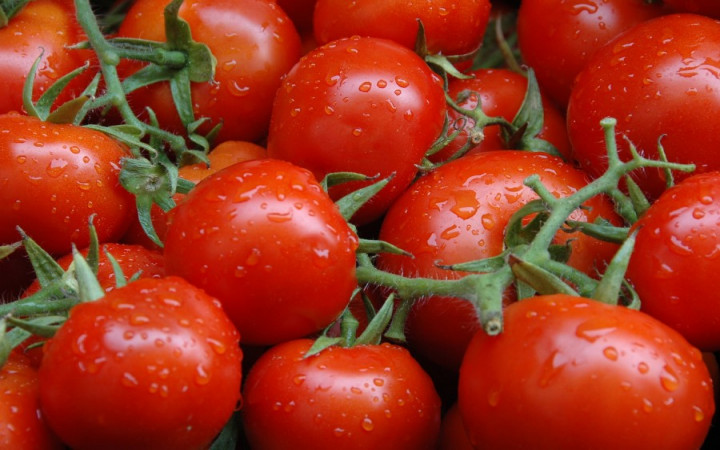Today’s Wonder of the Day was inspired by Jayna. Jayna Wonders, “why do tomatos turn red when they are ripe?” Thanks for WONDERing with us, Jayna!
Quick! What color is a tomato? That's easy, right? They're red! Whether you're enjoying cherry tomatoes in a salad or a thick slice of a beefsteak tomato on a cheeseburger, there's no denying that rich red color.
If you go searching for a tomato in a garden, though, you might have some trouble if you're searching for the color red. When tomatoes are growing on the vine, they're not bright red like they are when they're ripe and ready to eat. Instead, they're green.
What's going on here? Are these vegetables (or fruits?) transformers? Why do they grow green on the vine and then turn red when they're ripe and ready to eat?
Tomatoes can give thanks to two of their pigments they use for photosynthesis for their color-changing transformation: chlorophyll and lycopene. Chlorophyll is green, and lycopene is red.
When tomatoes first begin to grow, they contain mainly chlorophyll. This gives them their green color you see when they're on the vine. As they mature, however, a change begins to take place.
As harvest time approaches, days get shorter and temperatures fall. When this happens, chlorophyll starts to dissolve and lycopene takes over. You can watch this process unfold from the outside, as the lycopene's red coloring slowly turns tomatoes from green to red.
Tomatoes must be at the mature green stage for this transformation to begin. At that point, tomatoes start to produce an odorless, tasteless, and invisible chemical gas called ethylene. Ethylene gas triggers the ripening process in tomatoes and other fruits. For example, it is the reason bananas bruise. In addition to turning red, tomatoes also get softer as their sugar levels rise and their acid levels fall, making them ready to eat.
While it may take months for tomatoes to grow, the ripening process occurs quickly during a fairly-short period of time. That's why most farmers harvest tomatoes when they're still green on the vine. As they're sent to market, they're treated with ethylene gas to jump-start the ripening process, so that they arrive at stores ripe and ready to eat.
Not all tomatoes will turn red at the same rate. Scientists have learned that smaller varieties of tomatoes, such as cherry tomatoes, tend to ripen faster than larger varieties, like beefsteak tomatoes.
Temperature also plays a role in the ripening process. Lycopene will not develop easily in either very cold or very hot temperatures. For tomatoes to ripen properly, the temperature needs to stay approximately 50-85º F.
If you grow tomatoes at home, you will occasionally find a tomato that has fallen off the vine while it's still green. Likewise, you might buy a tomato at the store that's still mainly green. Should you throw away these tomatoes?
No! If you have an unripe tomato, simply place it in a paper bag and give it a little time. As long as the tomato has reached the mature green stage, the paper bag will trap ethylene gas as it's produced by the tomato. The trapped ethylene gas will help to speed the tomato along to full ripeness in a matter of days!





